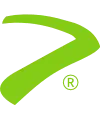Advanced
Terminal Interface
Updated: 26 February 2024Terminal in cPanel is a feature that provides users with access to a command-line interface from within cPanel. The Terminal interface allows you to interact directly with your server. This tutorial will guide you on how to use the Terminal interface in cPanel.
Accessing the Terminal
To access the Terminal interface, follow these steps:
- Login to your cPanel account.
- Scroll down to the Advanced section.
- Click on the Terminal icon.
Using the Terminal
Once you've accessed the Terminal interface, you can start using it. Here's how:
- Upon opening the Terminal interface, you will see a command prompt. This is where you enter commands. The prompt typically looks something like this:
[user@host ~]$ - Type your command next to the prompt. For example, to check your current directory, you would type: pwd and hit enter.
- Your command's output will be displayed in the Terminal. You can then enter another command, or close the Terminal when you're done.
Remember
The Terminal interface in cPanel works similarly to using SSH to connect to your server, but without the need to open a separate application.
Common Commands
Here are some common commands that you might find useful while using the Terminal interface in cPanel:
- ls - Lists all files and directories in the current directory.
- cd - Changes the current directory.
- cat - Displays the contents of a file.
- rm - Deletes a file.
- cp - Copies a file.
- mv - Moves a file.
Caution
While the Terminal can be a very useful tool, it's also very powerful - misuse can cause serious problems with your site and server. Always double-check your commands before entering them, and if you're unsure about a command, it's better to ask for help or look it up first.

